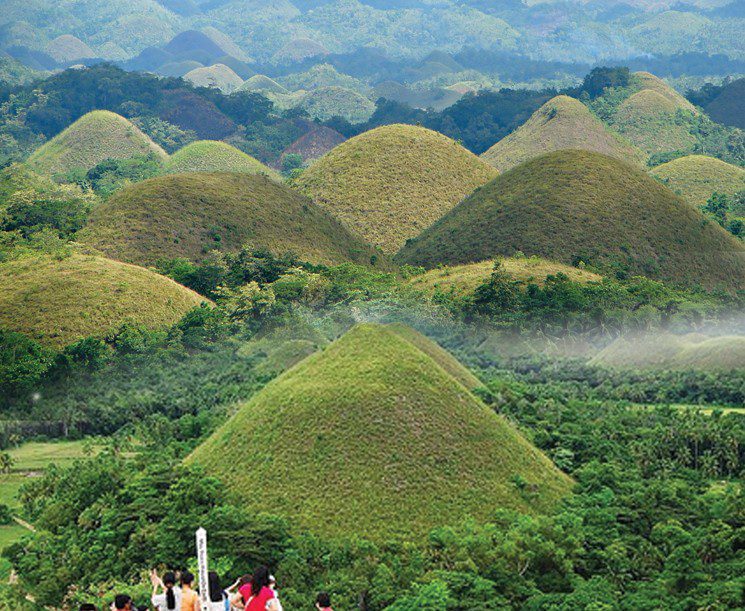There are several geographic, fanciful and legendary explanations to the natural phenomenon in Philippines
known as the ‘Chocolate Hills’, which lie in the Bohol province of the country, spread across the towns of Carmen, Batuan and Sagbayan in thousands, from 1,268 to about 1,776.
These look like mounds of land, symmetrical in shape and size, conical or dome-shaped, in geological terms, known as ‘karst’ which are formed from dissolution of soluble rocks. The hills are made of grass-covered limestone and vary in height from 98 to 164 feet, with the largest being 390 feet.
During summers when the weather is dry, the grass on the hills turn brown due to discolouration, and become chocolate-brown, hence the unique name. The vegetation is dominated by grass species like Imperata cylindrica and Saccharum spontaneum and several compositae – large and widespread family of flowering plants – and ferns grow on these hills.
The chocolate hills consist of ‘Late Pliocene’ to ‘Early Pleistocene’, thin to medium bedded, sandy marine limestones. These hills are separated by well-developed flat plain lands and contain several caves and springs. An explanation goes that the grassy hills were once coral reefs that erupted from the sea in a massive geologic shift, thereafter, wind and water put on the finishing touches over centuries.
Several legends are also attached to these hills: the first is a story of two feuding giants who hurled rocks, boulders, and sand at each other that eventually turned into hills; second one tells of a giant who was extremely powerful and youthful, who cried when his ladylove died and when the tears dried, the chocolate hills were formed the hills; the third and fourth legends tell of two giants, whose defecation formed the hills! Interesting, isn’t it? So go visit and see for yourself the beautiful creation of nature.
Follow us on Facebook, Twitter, Instagram, YouTube to get more updates related to Sachi Shiksha – The Famous Spiritual Magazine in India.













































